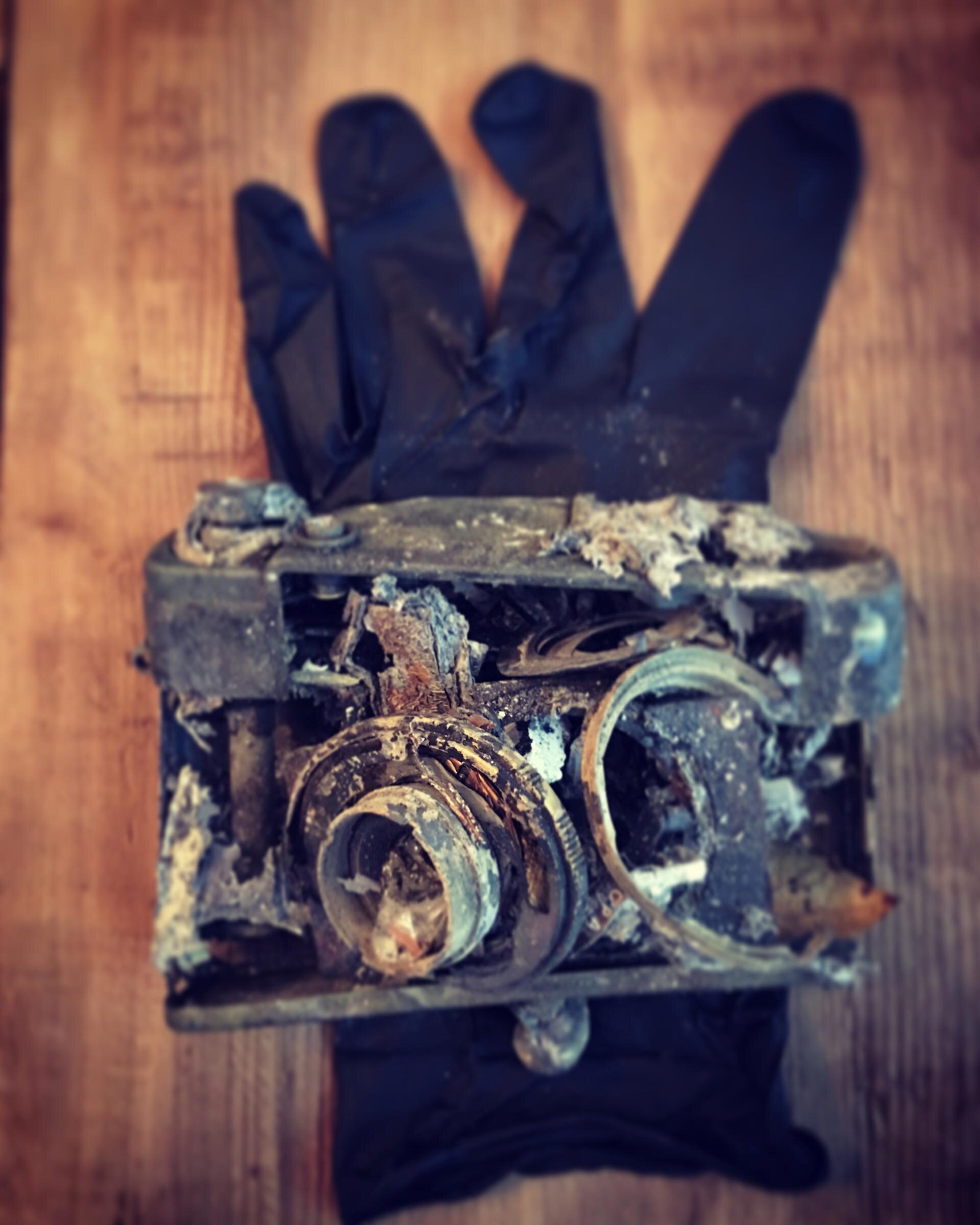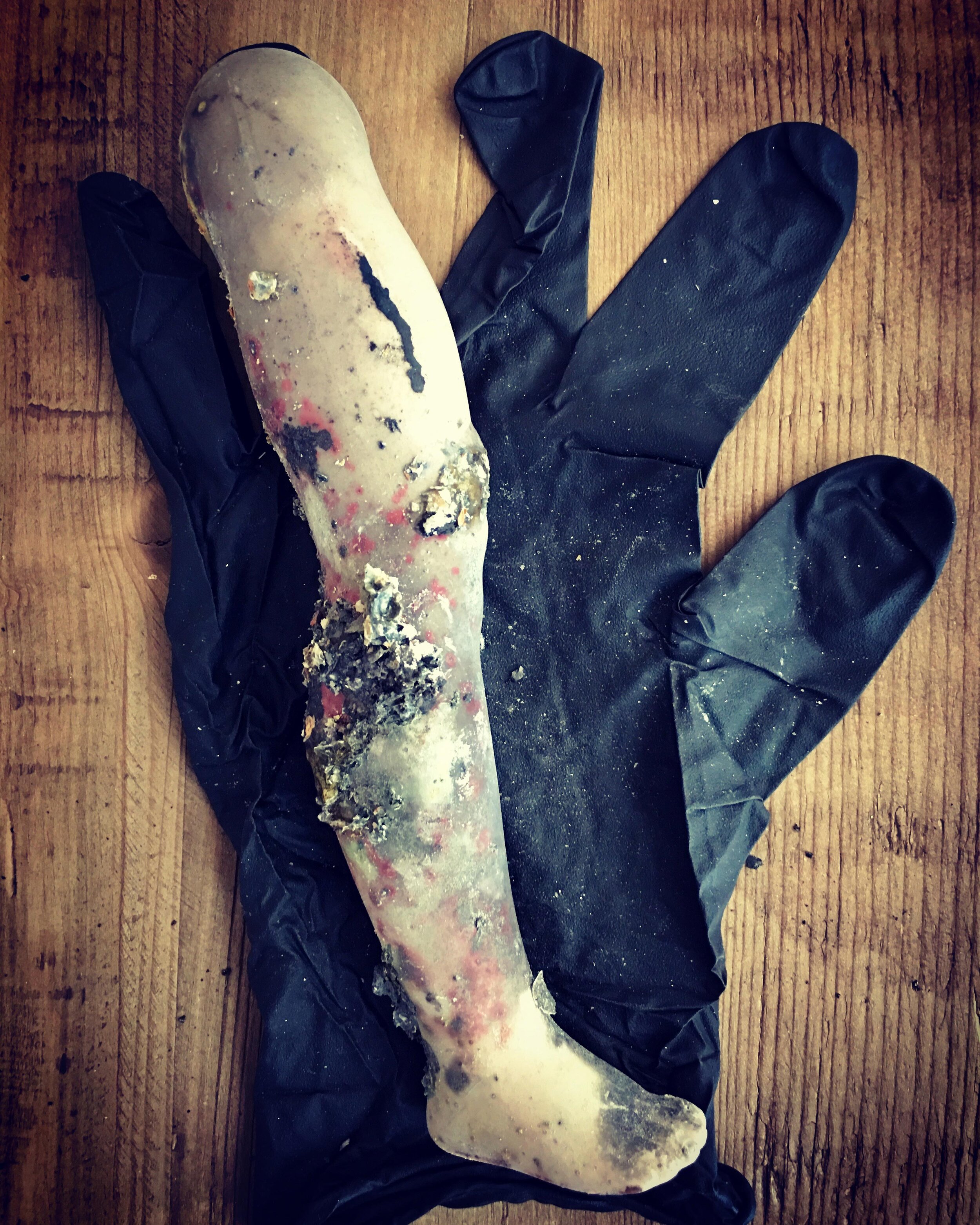A PHOTOGRAPHER TURNS THE LENS ON HER OWN HOME’S CHARRED REMAINS
BY DAVID MARKUS 10/31/2017 original articleThe night the wildfires hit the North Bay, Napa-based documentary photographer Norma Quintana was making plans to fly to Puerto Rico. She hadn’t heard from her 83-year-old Aunt Julia since Hurricane Maria had flooded the island and knocked out power. Norma was worried.
The plan was to fly to San Juan and find volunteer opportunities for her cardiologist husband Sergio, while Norma made her way to the town of Lares — where her aunt lived, where her parents had emigrated from in the early 1950's, and where Norma had visited every summer while growing up in Cleveland, Ohio.
Norma was curled up on the sofa with her computer when her phone rang. She looked to see if the call was from Puerto Rico, but it was her good friend Cathy in Napa. “It was late, and I was tired, and ready to sleep,” Norma remembers. “Even though I love Kathy . . . I thought whatever it was could wait.” Then came the second call, and the third, and she knew better than to ignore it.
“Kathy, what’s going on? Is everything okay?”
“Norma, there’s a bad fire burning in the hills above your house.”
“Can’t be. There’s nothing going on up here. It must be somewhere else.”
Norma hung up and awakened Sergio. They walked out into the street and up to a fire road above their house, on a hill near the Silverado Country Club. There was nothing unusual: no sirens, no police, no helicopters.
Then Norma glimpsed what at first was a glow over the hilltop. It grew brighter and brighter, until she could make out that it was a home in flames. She called 911, and got a busy signal.
Walking home, Norma and Sergio watched the roads filling up with cars and neighbors. Police on loudspeakers called out for residents to evacuate immediately. Minutes later the police were at Norma’s door, insisting that the family depart on the spot.
There was time only to roust Sergio’s mother and their 13-year old daughter, and to grab whatever they could carry to the car. Minutes later they drove to Sergio’s office in town where they would spend the night.
Norma and her family never saw their house standing again. Everything inside burned: all Norma’s photographs, including the beautiful traditional-style silver gelatin prints she created for her book Circus, A Traveling Life, about the lives of big-top performers, and all her prints for “Forget Me Not,” a portrait series about people who live, work or travel in Napa Valley.
She was also an avid collector of objects. Several of the rooms in her home housed collections: old accordions, vintage cameras, Chinese apothecaries, beautifully painted photo backdrops for her portraits, and a group of digital photo prints by Imogen Cunningham of Norma’s muse and inspiration, Frida Kahlo. All of it was gone.
Two framed prints by an unknown photographer of two anonymous townspeople and a child in Lares, Puerto Rico, among the few things Norma Quintana saved from the fire. (India Markus)
After listening for the past few weeks to far too many stories of people who have lost everything, the conversations begin to blend into one heart-wrenching narrative of disbelief and mourning. As I talked with Norma, though, it struck me that she wasn’t grieving. She wasn’t casting about to understand how and why. Not yet, at least.
Instead, she seemed to be embarking on a mission of rediscovery, a quest to find in the rubble of her former home a certain truth, that, were it not for the fire, she might never have discovered.
When Norma rushed out of her house for the last time that night of Oct. 8, she carried her large-format portrait camera, her computer, and two framed prints by an unknown Puerto Rican photographer of two anonymous townspeople and a child in Lares. “Why I took those things I don’t know,” she says now. “I never dreamed everything else would be lost.”
When she and Sergio returned for the first time to the site of their home, nothing but a ghostly looking wrought iron decorative display and the steel skeleton of a large awning was recognizable.
Select images from Norma Quintana's book, 'Circus: A Traveling Life.' (© Norma Quintana)
“Everything seemed to have disappeared,” she recalls. “But as I looked closer, I noticed two things: a certain strange beauty in the ashes, and my own lack of sentimentality in the moment.”
As she walked through the remains, she began to find objects she recognized: a pin, a wristwatch, a statuette of a clown. She took them back to the family’s temporary home on the west side of Napa, provided to them by friends who live in Houston (where Hurricane Harvey had just done his worst). She began to photograph these pieces with her iPhone, cradling each object in the palm of a black rubber glove like the ones she wore as she combed through the wreckage.
She called the collection “Forage From Fire.”
“I love texture and layers and creative arrangements. And that was what I was seeing. There was a beauty both in the ruins and in the objects I was finding, and I knew instantly I had to document it.”
Norma Quintana searches for items in the ashes of her Napa home. (India Markus)
As Norma pokes through the ashes, she narrates her thoughts aloud. “I have always been a documentarian and a collector, looking, hunting for some meaning in my surroundings.” She picks up a discolored spoon. “Why is this spoon here? Was it in this place when the fire struck? Why is it still intact? What exactly is this beauty in the ashes?” She offers no answers, but you sense they will come.
Norma has shared on social media some of her Forage series (shown in its entirety above and below), and the response has been profound. People find an anchoring sense that in chaos and bewilderment there are still things that survive, literally and figuratively, and there's a spirit in these things that, in a modest, fleeting way, transcends the despair.
Reaching down to lift the charred remains of her collection of old cameras, film canisters and spools, Norma pauses and articulates an idea that could serve as a mission statement for her current search-and-sift efforts.
“I have an innate and unquenchable desire to collect things. Not because I want to posses them, but because I want to celebrate the wonderment of them. It’s not the owning, it’s the knowing, that motivates me."
Norma goes on. “Finding these objects, no longer in the state they were when they were mine, somehow makes the destruction less devastating. What is devastating, of course, is the loss of my home, that security, that place of memories. I don’t know yet if these pictures can soothe that, for me or anyone else. I hope so.”
It strikes me that as complicated as her situation is now, with these “portraits” Norma is onto something uncomplicated and timeless. Like the discovery of fossils or artifacts from lost civilizations, her images remind us that, amid so much loss, some things actually survive, even if they bear little resemblance to what was. And with the passage of time, the "knowing" of these surviving objects helps people heal.
Before we part, I glance at the two framed portraits she took the night she fled the fire. I ask about her trip to Puerto Rico and her Aunt Julia. “Oh,” she says. “I forgot to tell you. My aunt called me the afternoon after the fire. She’s fine. She had just heard about the terrible things happening here, and wanted to know if I was okay. It was almost funny. I think I laughed and said, ‘Yes, I’m okay.’”
All laughing aside, I think she's right.

















